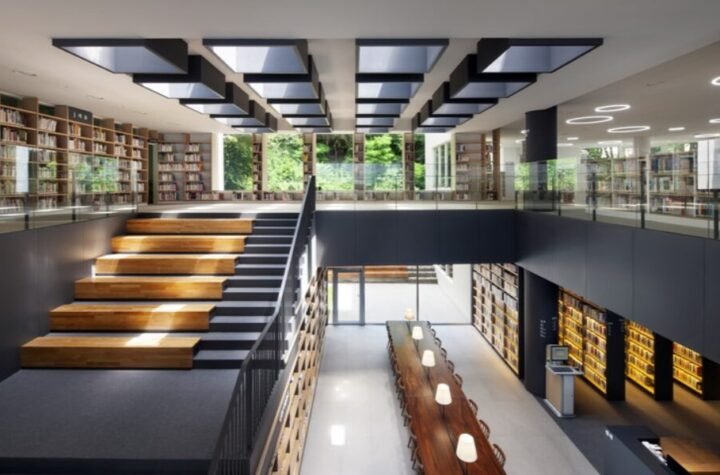
Traditional Dress of Ladakh
Traditional Dress of Ladakh: Ladakh, with its stunning landscapes and harsh climate, has a rich cultural heritage reflected in its traditional clothing. Designed to protect against extreme cold while expressing deep-rooted traditions, Ladakhi attire is a unique blend of practicality and style. From warm woolen garments to intricate headpieces, each piece tells a story of the region’s history and cultural identity. Below is a closer look at the traditional dress worn by men and women in Ladakh, highlighting the distinct features that make them special.
Traditional Ladakhi Dress for Men
Goncha
The Goncha, also known as Kos, is a loose, voluminous gown traditionally worn by men in Ladakh. The materials range from velvet, cotton, and wool to polyester blends, with colors like burgundy, black, grey, and brown being popular for everyday wear. For special occasions, wedding Gonchas are crafted in vibrant hues using luxurious materials such as silk, velvet, and brocade. These high-quality fabrics are often imported from Bhutan and Nepal. While younger men tend to prefer lightweight versions, older generations stick with heavy woolen Gonchas for added warmth during the freezing winters. Traditional Dress of Ladakh
Tipi
The Tipi, or Tibi, is a traditional hat worn by Ladakhi men. Made from brocade, this hat rests loosely on the head and partially covers the hair. Members of the Buddhist community often choose colorful Tipis for ceremonies and festive events, while a simple monochrome or maroon Tipi is preferred for everyday use.
Traditional Brokpa Costume for Men
The Brokpa are a unique tribal community in Ladakh with their own customs and traditions. Brokpa men wear a distinctive white woolen outfit, complete with a matching waistcoat and woolen pants. This attire is designed to provide warmth and comfort in the region’s cold climate. Traditional Dress of Ladakh
Traditional Ladakhi Dress for Women
Yogar and Lokpa
The Yogar is a traditional cloak worn by women, made from sheepskin with a wool-lined interior to offer protection from the intense cold. Typically crafted from green fabric with silk brocade and red patterns, the Yogar was once an everyday necessity for Ladakhi women. Today, it is reserved for festivals and other significant occasions, symbolizing a connection to the region’s heritage.
Kos Kar
Worn by the Changpa nomads, Kos Kar (or Lawa Goncha) is a distinctive white robe crafted from thick sheep wool and skin. This rugged and warm garment is perfect for the nomadic lifestyle in Ladakh’s extreme climate, offering both comfort and durability. Traditional Dress of Ladakh
Traditional Brokpa Costume for Women
Brokpa women’s attire is characterized by pale garments paired with the Lokpa, a garment that covers their back. These outfits are often decorated with silver, stones, shells, and other precious ornaments, showcasing the community’s cultural identity.
Traditional Headgear for Women in Ladakh
Jugin
Worn by Muslim women in Ladakh, the Jugin is a decorative piece that features a golden ornament hanging from the forehead, surrounded by strings of pearls. The Jugin is often paired with a delicate, embroidered veil that covers the hair and face, adding a touch of elegance to traditional attire.
Gha-ram and Ser-po Tibi
In the Zanskar region, tribal women wear the Gha-ram Tibi—a warm cap made from a coarse, yellowish fabric originating from Kashmir. Another version, the Ser-po Tibi, is made from Nambu, a special wool felt from Ladakh. These caps distinguish the Zanskar community from other Ladakhi groups. Traditional Dress of Ladakh
Perak
The Perak is a striking, elaborate headpiece worn by Ladakhi women, passed down through generations as a symbol of wealth. This heavy, blue headdress extends from the forehead down to the lower back, adorned with turquoise stones, silver charms, and coral embellishments. The Perak is a proud display of Ladakhi heritage, often worn during important celebrations.
Montho Tibi (Brokpa Headdress)
The Brokpa headdress, or Montho Tibi, is a floral headpiece featuring a saffron-colored flower called Shoklo. It is further embellished with coins, peacock feathers, and metal trinkets, representing the distinct style of the Dard community in Ladakh.
Traditional Jewellery and Footwear in Ladakh
Kau or Gau
The Gau is an iconic piece of Ladakhi jewellery—an octagonal or hexagonal gold amulet, often set with precious stones and pearls. These intricate designs serve both as accessories and protective talismans, passed down through generations. Traditional Dress of Ladakh
Pabu, Khulu, and Lapul
Traditional footwear in Ladakh includes Pabu, sturdy shoes made from yak or goat leather with decorative stripes known as Thikma Pabu. The simpler Khulu and Lapul are more commonly worn for daily activities, providing practical protection against the cold.
Conclusion
Ladakhi clothing is a fascinating combination of cultural symbolism and practicality, designed to withstand the region’s extreme climate while reflecting the rich heritage of its people. Even in the face of modern influences, many traditional elements remain a cherished part of Ladakhi life, worn with pride during festivals and special events. These garments offer a glimpse into the cultural tapestry of Ladakh, making them a vital part of the region’s identity. Traditional Dress of Ladakh
FAQs about Traditional Dress of Ladakh
What is the traditional attire for men in Ladakh?
Men in Ladakh typically wear the Goncha, a loose gown made from materials like velvet or wool, along with the Tipi, a traditional hat. Members of the Brokpa community wear distinct white woolen garments.
What is a Perak, and who wears it?
A Perak is a traditional Ladakhi headdress worn by women. It’s a large blue headpiece decorated with turquoise stones, silver charms, and coral, passed down as a symbol of wealth and heritage.
What kind of materials are used in traditional Ladakhi clothing?
Traditional Ladakhi clothing often incorporates materials like wool, pashmina, and sheepskin, which are ideal for protecting against the cold. Velvet, silk, and brocade are used for more decorative attire.
What are some common accessories worn by women in Ladakh?
Women in Ladakh wear a range of traditional accessories, including the Gau—a gold amulet with precious stones—and elaborate headpieces like the Perak and Jugin. Jewellery often features silver, turquoise, and coral.
How does Ladakhi clothing adapt to the harsh climate?
Ladakhi clothing is designed for warmth and protection against extreme cold, using thick wool and sheepskin for insulation. Cloaks like the Yogar and hats such as the Tipi are essential for staying warm during the harsh winters.





More Stories
Integrating Digital Learning in Bangalore’s Academic Environments
How a PR and Communications Agency India Helps Brands Build Media Relations?
Why Smart Data Management Makes Business Life Easy?